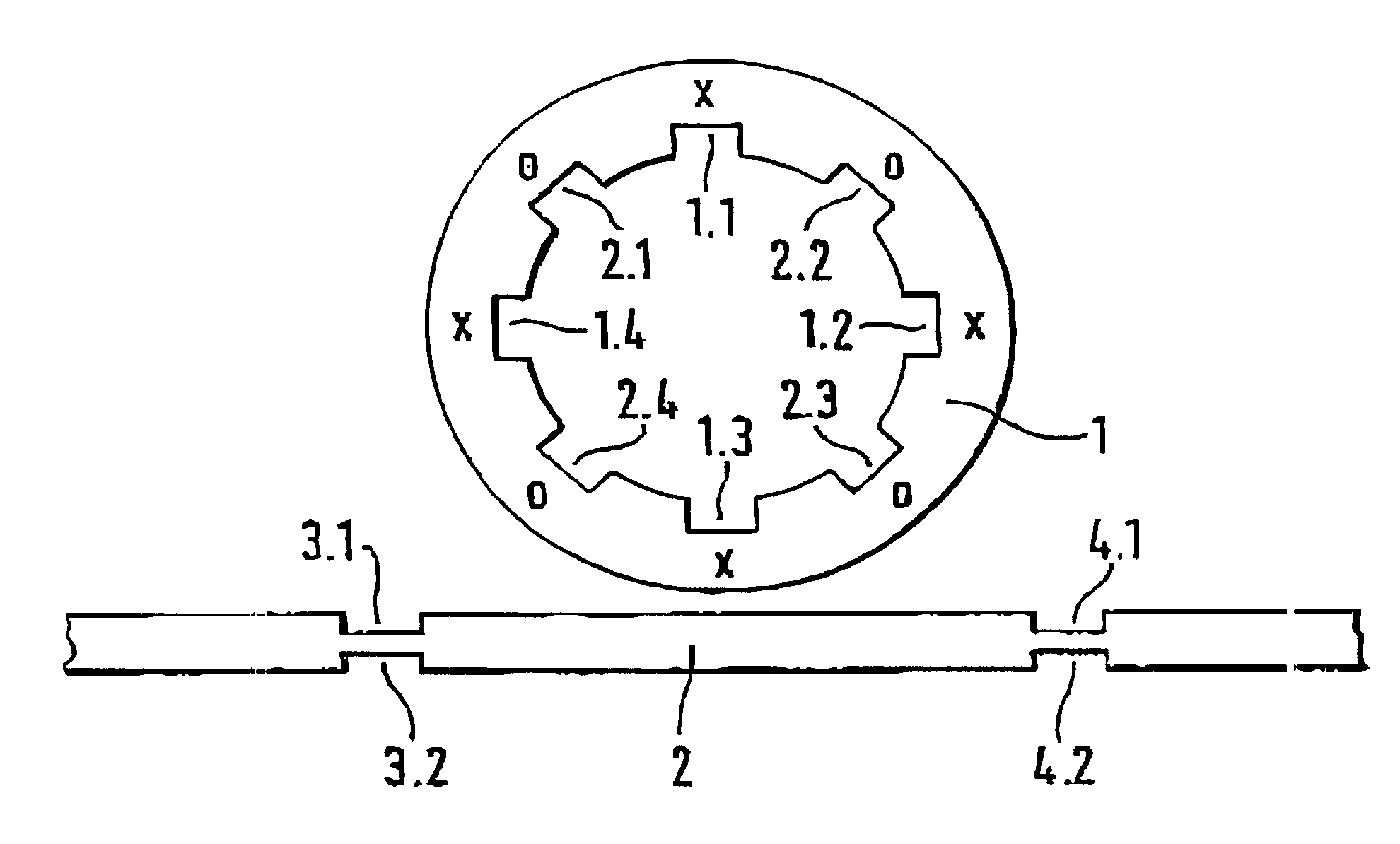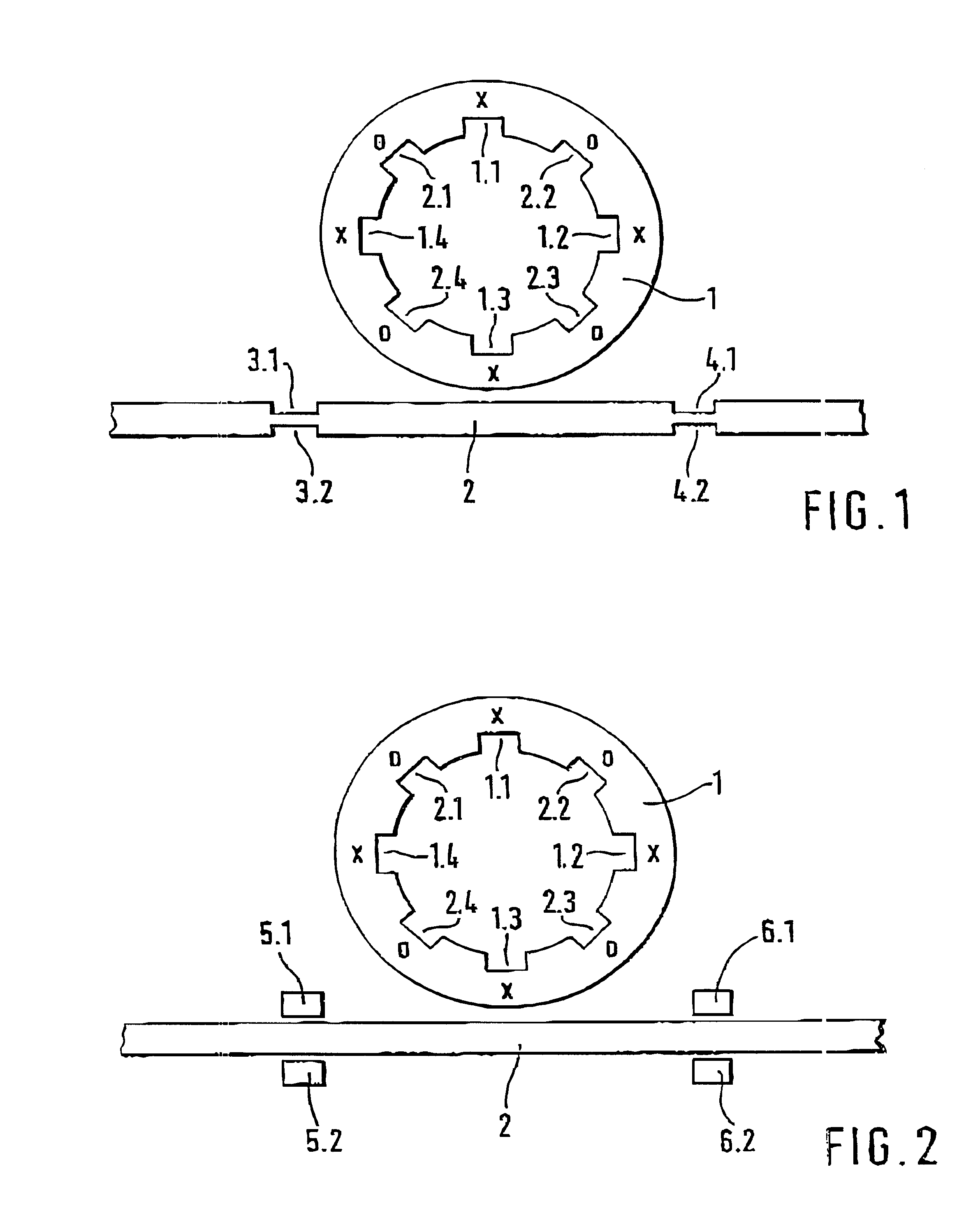Method of balancing the bandwidth of a dual-mode filter
- Summary
- Abstract
- Description
- Claims
- Application Information
AI Technical Summary
Benefits of technology
Problems solved by technology
Method used
Image
Examples
Embodiment Construction
A ring resonator 1, designed as a strip line ring, is shown in FIG. 1. There are always two resonance modes in such a ring resonator. The ring resonator 1 has a length (which means the periphery of the circular center line of the ring resonator) of an even-number multiple of the average operating wavelength of the dual-mold filter produced by the ring resonator. The two modes are oriented orthogonal to each other; this means that the current maxima of one mode occur at the sites of the current minima of the other mode. The locations at which the first mode has current maxima are denoted x in the drawing on ring resonator 1, and the locations at which the second mode has current maxima are denoted o.
If a narrowing of the line width is now produced at the site of a current maximum of one mode on the strip line ring, the resonance frequency of this mode will be shifted to a lower frequency. A current minimum is situated with the other mode at the same site of the line narrowing, which ...
PUM
 Login to View More
Login to View More Abstract
Description
Claims
Application Information
 Login to View More
Login to View More - R&D
- Intellectual Property
- Life Sciences
- Materials
- Tech Scout
- Unparalleled Data Quality
- Higher Quality Content
- 60% Fewer Hallucinations
Browse by: Latest US Patents, China's latest patents, Technical Efficacy Thesaurus, Application Domain, Technology Topic, Popular Technical Reports.
© 2025 PatSnap. All rights reserved.Legal|Privacy policy|Modern Slavery Act Transparency Statement|Sitemap|About US| Contact US: help@patsnap.com


